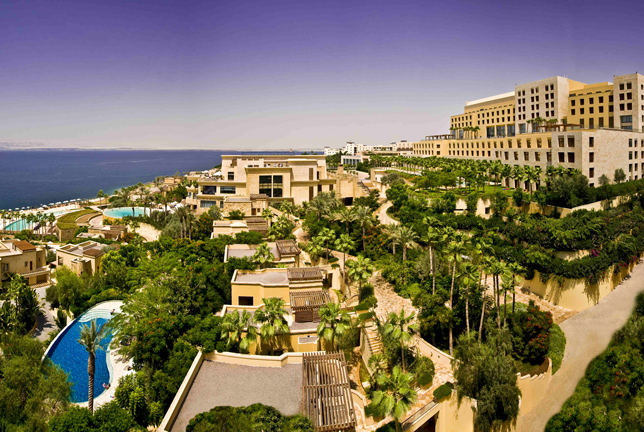
 One of Jordan’s biggest attractions is Petra, the ancient architectural masterpiece carved out of sandstone. But over the last decade, there’s been a concerted effort in the country to curb mass appeal and instead target the luxury traveler niche. Our team was recently in Jordan to delve deeper into the nation’s new luxury scene.
One of Jordan’s biggest attractions is Petra, the ancient architectural masterpiece carved out of sandstone. But over the last decade, there’s been a concerted effort in the country to curb mass appeal and instead target the luxury traveler niche. Our team was recently in Jordan to delve deeper into the nation’s new luxury scene.
“Jordan doesn’t wish to be a volume-driven attraction like Egypt,” says Sean Cullen, director of sales and marketing at Mövenpick Resort Petra, a luxury resort located near the entrance of Petra. “It’s an exclusive destination. The current visitor profile is over 40, financially sound, widely traveled, interested in history and culture, and seeking out a once-in-a-lifetime experience.”
That sophisticated visitor is shaping the local hotel industry. Since Mövenpick opened the first Petra property in 1997, the Swiss company has bolstered its Jordan portfolio with four new luxury resorts around the country, while additional higher-end chains like Kempinski, Four Seasons, InterContinental and Crowne Plaza also have resorts there. Other hotels are opening in the next two years, as well, according to Dr. Abed Al Razzaq Arabiyat, managing director of the Jordan Tourism Board, including the 300-room Fairmont Amman in 2014, the Luxury Collection’s 200-room Al Manara, Aqaba in late 2014, The St. Regis Amman in early 2015 and and the 280-room W Amman Hotel in late 2015.
But hotels are only part of the story. Transportation in Jordan is also getting a luxury makeover, including an expansion to the Queen Alia International Airport. And Royal Jordanian Airlines’ customer experience is getting major upgrades, as well: The fleet now includes several high-end jets, including the Boeing 787 Dreamliner and Airbus A319; Crown Class passengers enjoy chef-prepared four-course meals on every flight; and economy class passengers on flights longer than two hours get their choice of three different dishes. A new cruise ship terminal is also under construction in the southern coastal city of Aqaba.
Jordan’s government is also committed to promoting expansion in the luxury tourism sector. More than $30 million has been spent on the two-stage Jordan Tourism Development Project, which is designed to improve the country’s competitiveness as an international tourism destination by promoting private-sector investment, enhancing ecotourism, and upgrading and preserving key archaeological sites like Petra and the Amman Citadel. Another $20 million has been pumped into Aqaba, thanks to the creation of the Aqaba Special Economic Zone. This low tax, duty-free and multi-sector development area on the Red Sea has encouraged investors to build high-end shopping, lavish business hubs, golf courses and resorts, including the 667-acre master planned marina community designed by American firm AECOM.
And despite the turmoil of the Arab Spring in neighboring countries, luxury tourism in Jordan has actually increased over the last two years—Arabiyat says he believes it’s due to the local attractions. “Jordan may be small in size, but it’s big in unique sights. For leisure, we have the Dead Sea, the largest natural spa on Earth; and for those seeking a spiritual experience we have the place where Jesus was baptized.” When it comes to history, Arabiyat says Jordan has an “open-air museum” in Petra; and for sun, sea and snorkeling there’s the resort-laden Red Sea coast.
With many hotel, entertainment and infrastructure projects still under development, Cullen believes Jordan’s luxury tourist market will continue to grow. “Independent guests are on the increase as they take advantage of competitive prices and fewer crowds at sites. The destination’s fortunes will improve as confidence in traveling to the region recovers.” It seems Jordan’s luxury tourism trend has only just begun.
Photo Courtesy of Kempinski
